Anthony ZurcherNorth America correspondent, travelling with the president
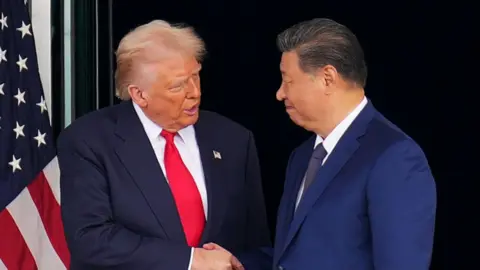 Getty Images
Getty ImagesUS presidential trips abroad have traditionally been an opportunity to display the power of the American nation on the world stage. Donald Trump’s five-day swing through eastern Asia, on the other hand, has been a display of the power of Trump – but also, at times, of that power’s limitations.
Trump’s stops in Malaysia, Japan and South Korea over the course of the first four days were an exercise in pleasing a sometimes mercurial American president. It was an acknowledgement that Trump, with the flick of a pen, could impose tariffs and other measures that have the potential to devastate the economies of export-dependent nations.
His sit-down with Chinese leader Xi Jinping on Thursday, however, was something entirely different.
It was a meeting of equals on the global stage, where the stakes for both nations – for their economies, for their international prestige, for the welfare of their people – were enormous.
With China, Trump may flick his pen, but such actions come with consequences. They come with a cost.
For the first four days, Trump’s most recent foray into global diplomacy was smooth sailing.
Each stop was punctuated by a blend of traditional trade negotiations – deals made under the shadow of Trump’s “reciprocal” tariffs – and personal accommodations that at times bordered on the obsequious.
In Malaysia, Trump secured access to critical minerals and made progress toward finalising trade arrangements with south-east Asian nations. He also presided over a treaty that should ease border tensions between Thailand and Cambodia – the kind of “peace deal” the American president loves to tout.
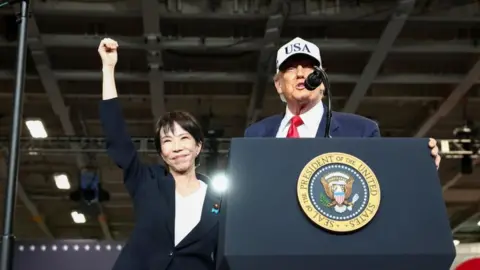 Reuters
ReutersIn Japan, Trump’s Marine One flew past a Tokyo Tower lit red, white and blue – with a top in Trumpian gold.
Newly elected Prime Minister Sanai Takaichi detailed $550bn in Japanese investments in the US and offered the American president a gift of 250 cherry trees for America’s 250th birthday, and a golf club and bag that belonged to Shinzo Abe, the assassinated former prime minister who bonded with Trump in his first term.
She also became the latest foreign leader to nominate Trump for his much-desired Nobel Peace Prize.
Not to be outdone, South Korea welcomed Trump with artillery firing a 21-gun salute and a military band that played Hail to the Chief and YMCA – the Village People song that has become a Trump rally anthem.
President Lee Jae Myung held an “honour ceremony” for Trump during which he gave the American leader his nation’s highest medal and a replica of an ancient Korean dynastic crown.
Lunch with Lee featured a “Peacemaker’s Dessert” of gold-encrusted brownies. Later that day, the Koreans served Trump vineyard wine at an intimate dinner in Trump’s honour with six world leaders attending the Asia-Pacific Economic Conference summit.
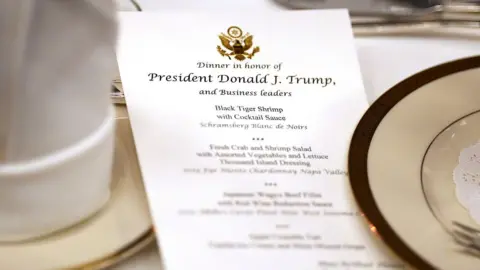 Getty Images
Getty ImagesIn the US, Trump may be the subject of “No Kings” demonstrations by Americans who disapprove of his boundary-testing expansions of presidential power, but during his East Asia swing he was treated like royalty.
And like the kings of old, Trump arrived in Korea seeking tribute – in the form of $200bn in cash payments, $20bn a year, from South Korea to the US, to be invested at the direction of Trump’s government. Agreement on the terms of those payments helped ensure that the tariff rate on South Korean exports to the US would drop from 25% to 15%.
The main event of Trump’s Asia trip came in its final hours, however, as he met with Xi.
There, the power dynamic between leaders of the world’s two largest economies was decidedly different than the interactions Trump had with his foreign counterparts in previous days.
Missing were all the pomp and the pageantry. No military bands, no honour guards, no carefully crafted menus celebrating mutual national affection. Instead, the two leaders and their top aides sat across a long white negotiating table in a nondescript military building just off the runway of Busan’s international airport.
It was perhaps a reflection of the high stakes that when Trump shook hands with Xi in Busan, he appeared tense. It was a far cry from his relaxed attitude when he told me the day before that he was optimistic he would have a good meeting.
“I know a little bit about what’s going on because we have been talking to them,” he said. “I’m not just walking into a meeting cold.”
For months, Trump had been threatening higher tariffs on Chinese exports to the US – as a source of revenue for the American treasury as well as to pressure China to open its markets and control the export of chemicals used to make the drug fentanyl.
China, unlike many of America’s other trading partners, responded with escalation, not concessions ion.
If tariffs were a source of economic hardship for China, then Beijing would target America’s vulnerabilities. It suspended purchase of US agricultural products and proposed export controls on its large supply of critical minerals – resources that the US, and much of the world, rely on for high-tech manufacturing.
Trump’s mood was upbeat after the meeting, which he described as “amazing” and graded a 12 on a scale of 1-10. The president appeared in a good mood even as the plane jostled from rough turbulence as it climbed into the sky.
But it was a battle of wills and economic pain set the two nations on a path that ultimately led to Thursday’s meeting and an agreement on both sides to de-escalate.
The US lowered its tariffs, while China eased access to critical minerals, and pledged to resume importing US agricultural products and increase purchases of US oil and gas.
While it may not have been a breakthrough, it was an acknowledgement by both sides that the existing situation was unsustainable.
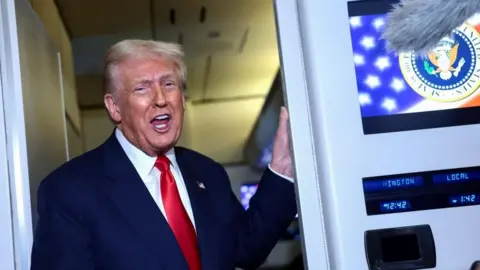 Reuters
ReutersThe international order that will take its place, however, is far from clear. As Xi acknowledged in his opening remarks at the bilateral meeting, China and the US “do not always see eye to eye with each other”.
“It is normal for the two leading economies in the world to have frictions now and then,” he said.
That may represent an improved outlook after months of tension, but it was also an sign that “frictions” are here to stay.
China has global and regional ambitions and a growing willingness to expand its influence.
Trump, for his part, has attempted to reorder American priorities abroad, using US economic might to pressure allies and adversaries alike. And it is those American allies – nations like Japan and South Korea that have long relied on American political, economic and military support – that are scrambling to adjust to the new reality.
Some of that scrambling comes in the form of a bend-backward willingness to accommodate Trump in forms large and small. Gifts and dinnertime honours are easy, but multibillion dollar payments, increased military spending and permanent tariffs take a toll.
And they could ultimately prompt a reevaluation of relations with America – and, as a result, with China.
Trump may have received a king’s welcome in South Korea, but, in what could be viewed as a bit of on-point symbolism, as he departed, it was Xi who was arriving. And the Chinese leader’s Korean hosts had promised a diplomatic reception equal to that received by the Americans.
Xi is fully participating in the Apec leaders meetings – proceedings that Trump chose to skip. If there is a vacuum created by America’s international manoeuvres, it is a void China appears more than willing to fill.
Trump may be returning to America with everything he wanted from this trip. But, in a twist on the Rolling Stones song that he used to play at his political rallies, it’s not yet clear that he got what America needs.

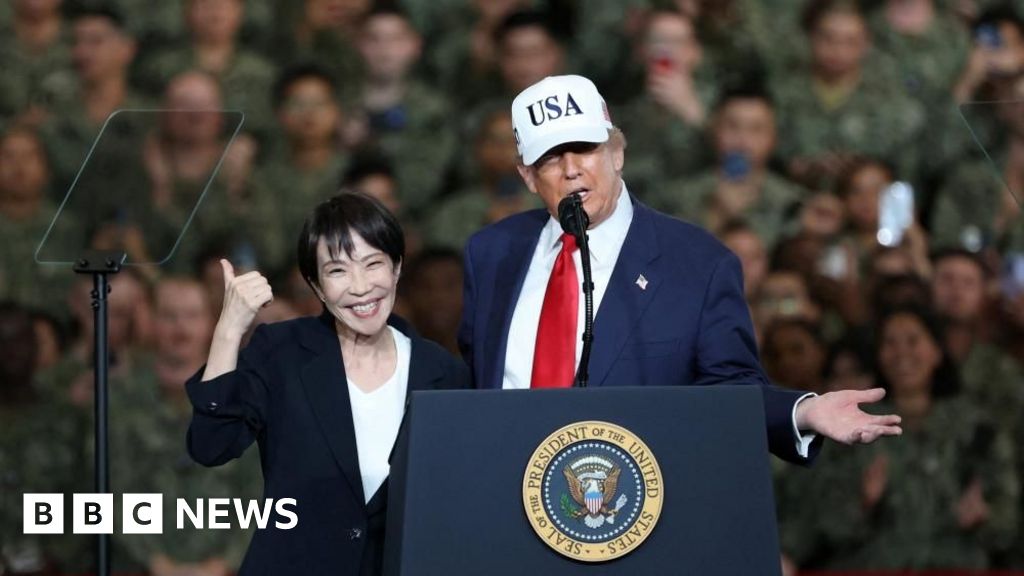

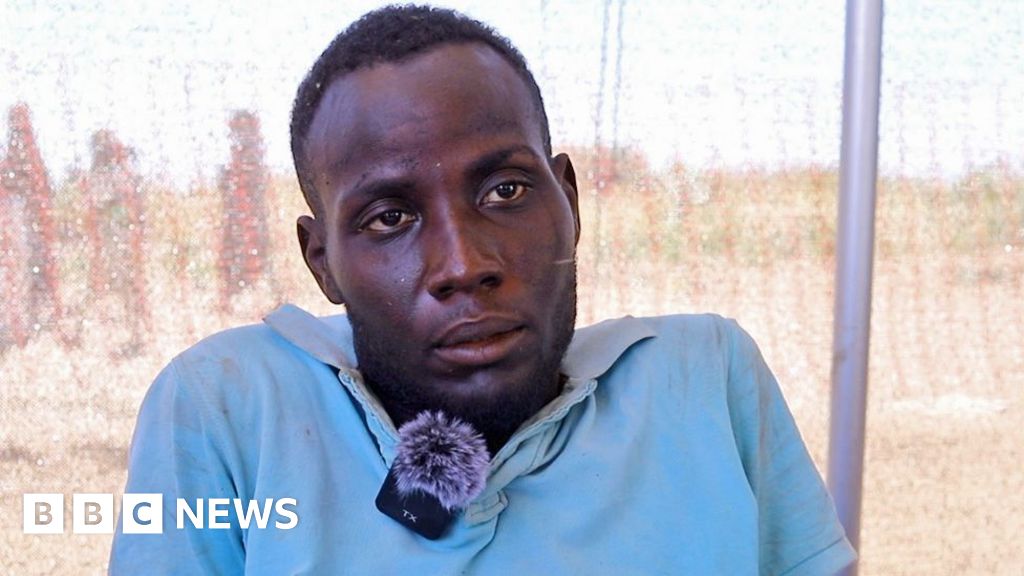
Comment ×